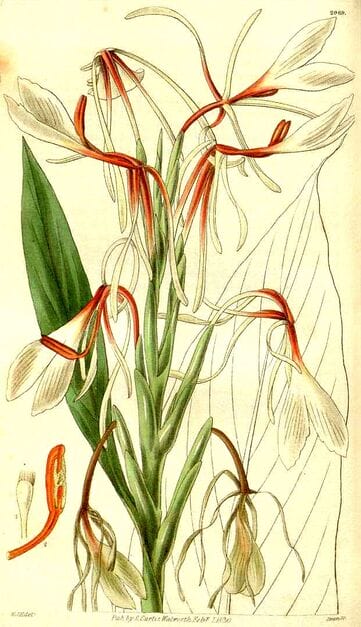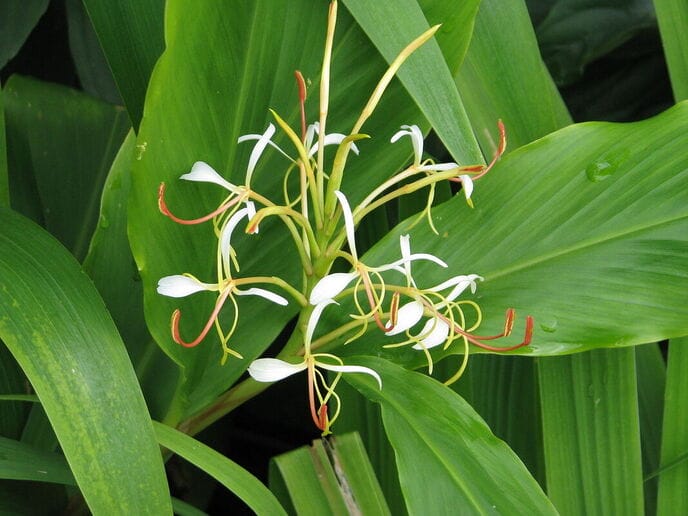Hedychium, Shathi
Spiked Ginger LilyShati, Gandashathi (Ayurveda)
Kapurkachari (Unani)
Poolankizangu (Siddha)
Sga Skya སྒ་སྐྱ (Tibetan)
 Hedychium spicatum
Hedychium spicatumCurtis’s Botanical Magazine (Illustration: Hooker), 1830
 Hedychium spicatum
Hedychium spicatum(Photo by peganum) (Wikimedia)
Botanical name:
Hedychium spicatum (syn. H. album)
NOTE: In Ayurveda, Unani and Tibetan Medicine, this medicine is used synonymously with Kaempferia galanga
Parts used:
Rhizomes; leaf
Temperature & Taste:
Warm, dry. Pungent
Uses:
1. Clears Phlegm, Stops Cough:
-Cough, Asthma
2. Clears Wind-Phlegm, Stops Spasms:
-Wind-Phlegm disorders in Tibetan Medicine
-Wind-Phlegm disorders affecting the Head and Nerves
-Wind diseases affecting the Heart
3. Warms the Stomach, Clears Cold:
-Nausea, Vomiting, Indigestion
-Loss of Appetite
-Hiccup
4. Moves the Blood:
-promotes circulation, clears stasis caused by Cold or Phlegm
5. Externally:
-as a paste applied to Inflammation and Rheumatism
-promotes hair growth
-used to repel insects
Dose:
1–3 grams of the Powder
Substitutes:
1. Kaempferia galanga in Kerala (Unani)
2. Zedoary
Main Combinations:
1. Bronchial Asthma, Hedychium Shathi with Inula racemosa, Emblic Myrobalan and Honey (Charaka)
2. Asthma, Hedychium Shathi with Inula racemosa, Ginger, Long Pepper, Cyperus rotundus and Adhatoda vasica
3. Vata/Wind Heart diseases, Hedychium Shathi with Boerhovia diffusa, Ginger and Chebulic Myrobalan with Ghee
4. Tonic for children, Hedychium Shathi with White Pepper, Red Coral, Borax, Saffron, taken with milk or honey; good for fever, cough, indigestion (Ayurveda)
5. Topically for Rheumatic pain, Hedychium Shathi with Ginger as a paste
Cautions:
1. Not used in Yin deficiency
